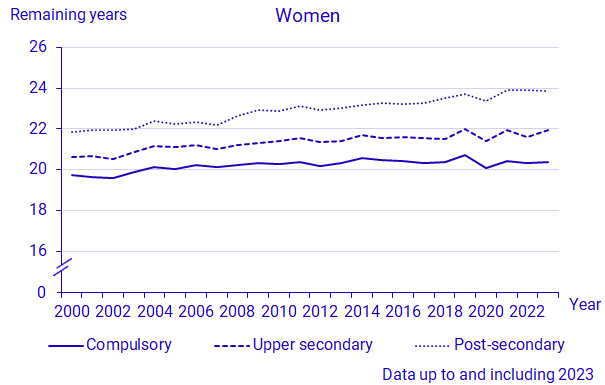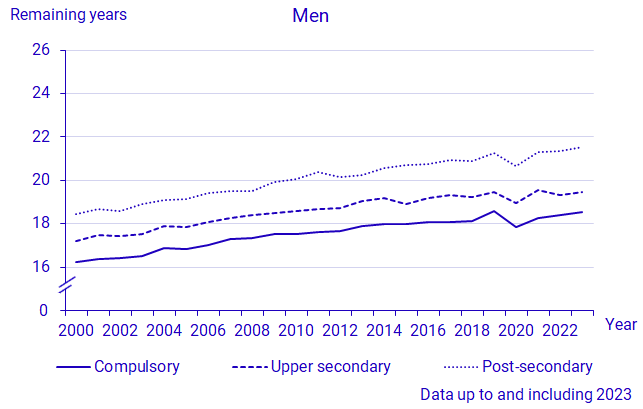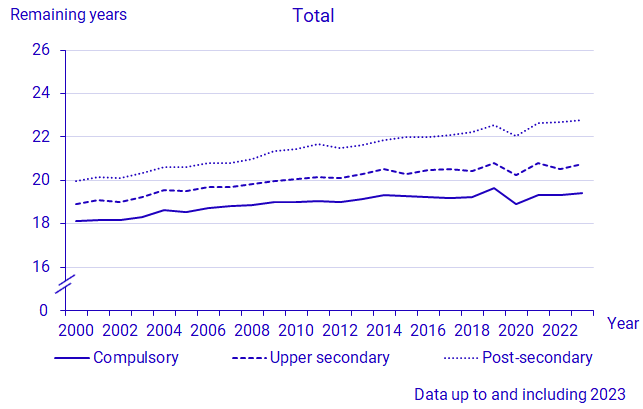Life expectancy at age 65 by educational attainement 2000-2023



Comments
In 2023 remaining life expectancy at 65 years was 20.9 years for both sexes taken together. That is 2.4 years more than in 2000. In other words, average life expectancy has increased considerably among older persons during the period 2000–2023. The figure shows that the number of years of remaining life expectancy has increased for all groups, regardless of the level of education.
However, there are clear differences in life expectancy between the groups. In 2023, for the group with post-secondary education, remaining life expectancy at age 65 was 23.8 years for women and 21.5 years for men. For the group with compulsory education, the number of expected years remaining was 20.4 years for women and 18.5 years for men. For the group with post-secondary education, the number of expected years remaining at age 65 was 3.5 years more (for women) and 3 years more (for men) than for those in the group with compulsory education.
Due to the high mortality from COVID-19, remaining life expectancy at 65 years dropped for both women and men in 2020, regardless of the level of education. In 2021, life expectancy at age 65 increased for both sexes. The changes between 2021 and 2023 follow different patterns for different groups. Remaining life expectancy for women of all educational levels in 2023 was at almost the same level as in 2021. Life expectancy for men with compulsory education and with post-secondary education increased by 0.3 and 0.2 years respectively while the change for men with upper secondary education was small.
During the entire period 2000—2023, remaining life expectancy at age 65 increased for all groups. The largest increase for women and men was seen among those with post-secondary education, 2 and 3.1 years respectively. This means that women and men with post-secondary education have widened the gap in average life expectancy to other groups.
In the most recent 10 years, 2013-2023, average remaining life expectancy at age 65 increased more for women and men with a post-secondary education than for the groups with upper secondary education and with compulsory education. The increase in average life expectancy was 0.8 years for women with post-secondary education and 0.5 years for women with upper secondary education. For women with compulsory education remaining life expectancy in 2023 was at almost the same level of 2013. For men, life expectancy at age 65 increased by 1.3 years for those with post-secondary education. The increase for those with compulsory education and with upper secondary education was 0.7 and 0.4 years respectively.
Remaining life expectancy by level of education is displayed here for persons born in Sweden. Results for foreign-born persons can be found in the Statistical database. The calculation of life expectancy is smoothed for death risks in the highest ages, 90 years and older, for 2000–2009, and 99 years and older for 2010–2011. The smoothing in 2000–2011 means that all groups of education are allotted the same death risk as women and men born in Sweden in total in the country as from the various high ages. The reason for this smoothing is that the level of education is not available for anyone born in Sweden before 1911. As from 2012, the same calculation is used as in the official statistics for women and men in total in Sweden.